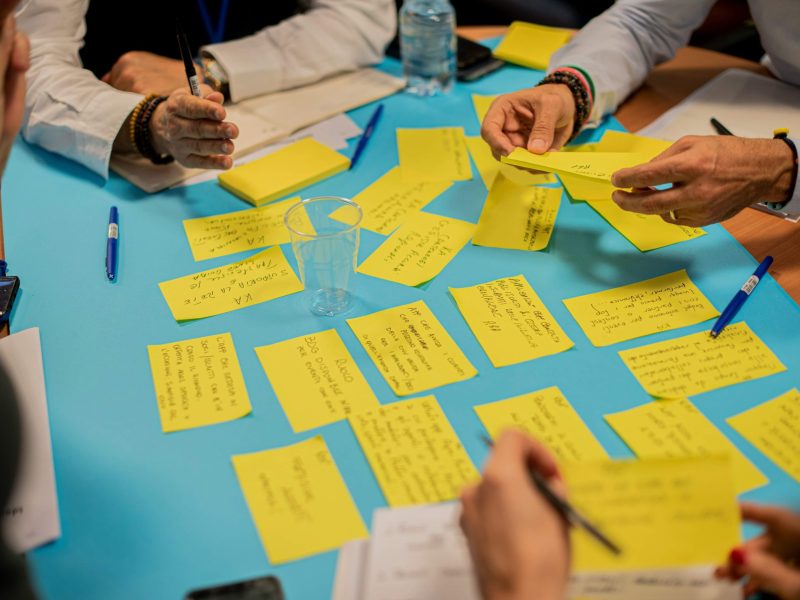Crafting Narratives That Move People to Action
Why Storytelling Moves Mountains
Storytelling isn’t just for campfires or Netflix binges. It’s a strategic tool that leaders, innovators, and changemakers use to rally support, spark action, and turn abstract ideas into tangible outcomes.
From IDEO’s human-centered design philosophy to the ancient wisdom of The Hero’s Journey, stories bridge the gap between logic and emotion.
In this post, I’ll guide you on how to wield storytelling frameworks, prototype narratives, and refine your voice to inspire action. Let’s dive in.
1. Building Your Story Framework: Structure Meets Purpose
Every influential story starts with a blueprint. Without structure, even the most compelling idea risks becoming a rambling anecdote.
Key Frameworks to Borrow
- The Hero’s Journey (Joseph Campbell): A timeless narrative arc used in myths and modern tales alike. Break your story into 12 stages, from the “Call to Adventure” to the “Return with the Elixir” (Campbell’s Foundation).
- IDEO’s Design Thinking: Apply their Inspiration-Ideation-Implementation model to storytelling. Start by empathizing with your audience, brainstorm narratives, then refine through feedback (IDEO Design Thinking).
- Three-Act Structure: Setup, Confrontation, Resolution. Simple yet effective for business pitches (StudioBinder Guide).
Create a Story Brief
Answer these questions to anchor your narrative:
- Objective: What action should the audience take?
- Conflict: What problem are you solving?
- Stakes: Why does this matter?
Example: IDEO’s work with the Clean Team sanitation project in Ghana framed lack of toilets as a dignity issue, not just a health crisis—raising empathy and funding (Case Study).
2. Know Your Audience: Empathy as a Superpower
Stories resonate when they reflect the listener’s needs, fears, and aspirations.
Tools for Audience Insight
- Empathy Maps: Visualize what your audience says, thinks, feels, and does (Template by Nielsen Norman Group).
- Personas: Build fictional profiles using demographic and psychographic data. Tools like Xtensio simplify this (Persona Creator).
- Surveys & Interviews: Use Typeform or Google Forms to gather direct insights.
Pro Tip: IDEO’s designers often immerse themselves in their audience’s world—like shadowing nurses for a healthcare project to capture authentic pain points.
3. Prototyping Your Story: Iterate Before You Amplify
A story is never perfect on the first draft. Prototyping lets you test, refine, and pivot.
Methods to Try
- Storyboarding: Sketch key scenes to visualize flow. Tools like Miro offer digital templates (Miro Storyboard).
- Minimum Viable Story (MVS): Borrowed from Lean Startup, craft a 2-minute version of your story. Pitch it to a small group and ask: “What’s unclear?” and “What would you do next?”
- Role-Playing: Act out the narrative with colleagues to spot gaps.
Case Study: Airbnb’s founders famously “sold” their idea by creating a cereal box (Obama O’s) to fund their startup—a tangible story prototype (Fast Company Article).
4. Tone & Style: The Secret Sauce of Engagement
Your story’s voice can make it unforgettable—or forgettable.
Crafting Your Voice
- Match Audience Expectations: A boardroom pitch needs data-driven clarity; a community rally thrives on passion.
- Emotional Arcs: Research by the University of Vermont found six core emotional arcs in stories (e.g., “Rags to Riches”). Use tools like Hemingway Editor to analyze tone (Study Link).
- The Power of Silence: Pauses and pacing build tension. Watch TED Talks by Bryan Stevenson for masterful delivery (TED Talk).
Style Checklist
- Use active voice (“We transformed” vs. “Transformation was achieved”).
- Inject sensory details (“The app’s notification buzzed like an angry bee”).
- Grammarly’s Tone Detector helps adjust language in real-time (Grammarly).
5. Motivating Action: From “Nice Story” to “Let’s Go!”
A story’s success lies in its ability to drive action.
Tactics to Embed
- Call-to-Action (CTA): End with a clear, specific ask. Example: “Join our beta tester community by Friday.”
- Data Storytelling: Pair anecdotes with stats. Tools like Tableau or Canva turn numbers into visuals (Canva Templates).
- SCQA Framework: Situation-Complication-Question-Answer. Used by McKinsey to structure persuasive arguments (McKinsey Guide).
Example: Charity: Water’s campaigns use personal stories of individuals + data on water access, prompting donations (Campaign Example).
Key Skills for Influential Storytellers
- Narrative Creation: Build structured, character-driven arcs.
- Story Prototyping: Iterate with feedback loops.
- Audience Engagement: Use tone, pacing, and interactivity (e.g., polls in Slido (Slido)).
Tools & Frameworks Cheat Sheet
| Tool/Framework | Use Case | Link |
|---|---|---|
| Miro | Collaborative storyboarding | miro.com |
| Hero’s Journey | Structuring narratives | The Write Practice Guide |
| Grammarly | Tone adjustment | grammarly.com |
| IDEO Design Kit | Human-centered storytelling | designkit.org |
Conclusion: Your Story Starts Now
Influence isn’t about loud voices—it’s about stories that stick. By blending frameworks like the Hero’s Journey with IDEO’s iterative ethos, you’ll turn ideas into movements.
Remember: prototype boldly, listen deeply, and let your audience’s needs guide your narrative. Now, go craft a story that doesn’t just speak—it roars.
Further Reading: “Resonate” by Nancy Duarte, “The Storyteller’s Secret” by Carmine Gallo, and IDEO’s Creative Confidence.
The image belongs to Jason Goodman on Unsplash


